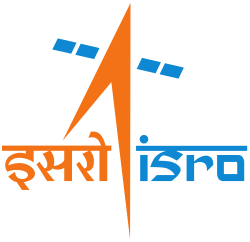Facilities and Infrastructure
The IDSN occupies nearly 120 acres at Bayalu, located 60 kilometers from Bengaluru. The campus houses the antenna systems, mission operations complexes and the Indian Space Science Data Centre along with other facilities and administrative buildings. [3]
Mission Operation Complex (MOX)
The IDSN operates two Mission Operations Complexes: MOX-1 established in 2008 and MOX-2 established in 2010. [3]
Indian Space Science Data Centre (ISSDC)
Located within the IDSN campus, ISSDC processes and archives scientific payload data from ISRO's space missions. [3]
ISRO Navigation Centre (INC)
Byalalu campus also houses the ISRO Navigation Centre (INC). The centre became active on 12 June 2013, at the time of launch of IRNSS-1A, the first of the Indian Regional Navigation Satellite System series of satellites. The INC has a high stability atomic clock. It will be used to co-ordinate across 21 ground stations in India. [4]
Antenna Systems
Along with the existing infrastructure of the ISRO Telemetry, Tracking and Command Network (ISTRAC), the IDSN is augmented by multiple large antennas to improve the visibility duration. [5]
32-Meter S/X-Band Antenna
The main antenna of the network is a 32-meter antenna that employs a parabolic reflector. The antenna mount utilizes wheel-and-track system for azimuth motion. Built in a beam waveguide configuration, this state-of-the-art system has supported the Chandrayaan-1 and Mars Orbiter Mission mission operations. [6] [7] Currently, it supports the Chandrayaan-2 orbiter, the Aditya-L1 mission and Chandrayaan-3.
A fibre optics / satellite link will provide the necessary connectivity between the IDSN site and Spacecraft Control Centre / Network Control Centre. This antenna is designed to provide uplink in both S-Band (20/2 kW) and X-Band (2.5 kW), either through Right circular polarization or Left circular polarization. The reception capability will be in both S-Band and X-Band (simultaneous RCP & LCP). It can receive two carriers in S-Band and one carrier in X-Band, simultaneously. The system will have a G/T of 37.5/51 dB/K (45° elevation, clear sky) for S/X-Band. The base-band will adhere to CCSDS Standards facilitating cross-support among the space agencies. The station is also equipped for remote control from the ISTRAC Network Control Centre (NCC). [8]
18-Meter S/X-Band Antenna (D-18 Tarang)
Commissioned in November 2021, the second antenna is an indigenous 18-meter antenna that provides supplementary deep space support. [9] It shares technical architecture with the 32m antenna at a reduced scale.
11-Meter antenna
An additional 11-meter antenna operates at the facility for additional flexibility and lower power applications. [10]
This page is based on this
Wikipedia article Text is available under the
CC BY-SA 4.0 license; additional terms may apply.
Images, videos and audio are available under their respective licenses.



